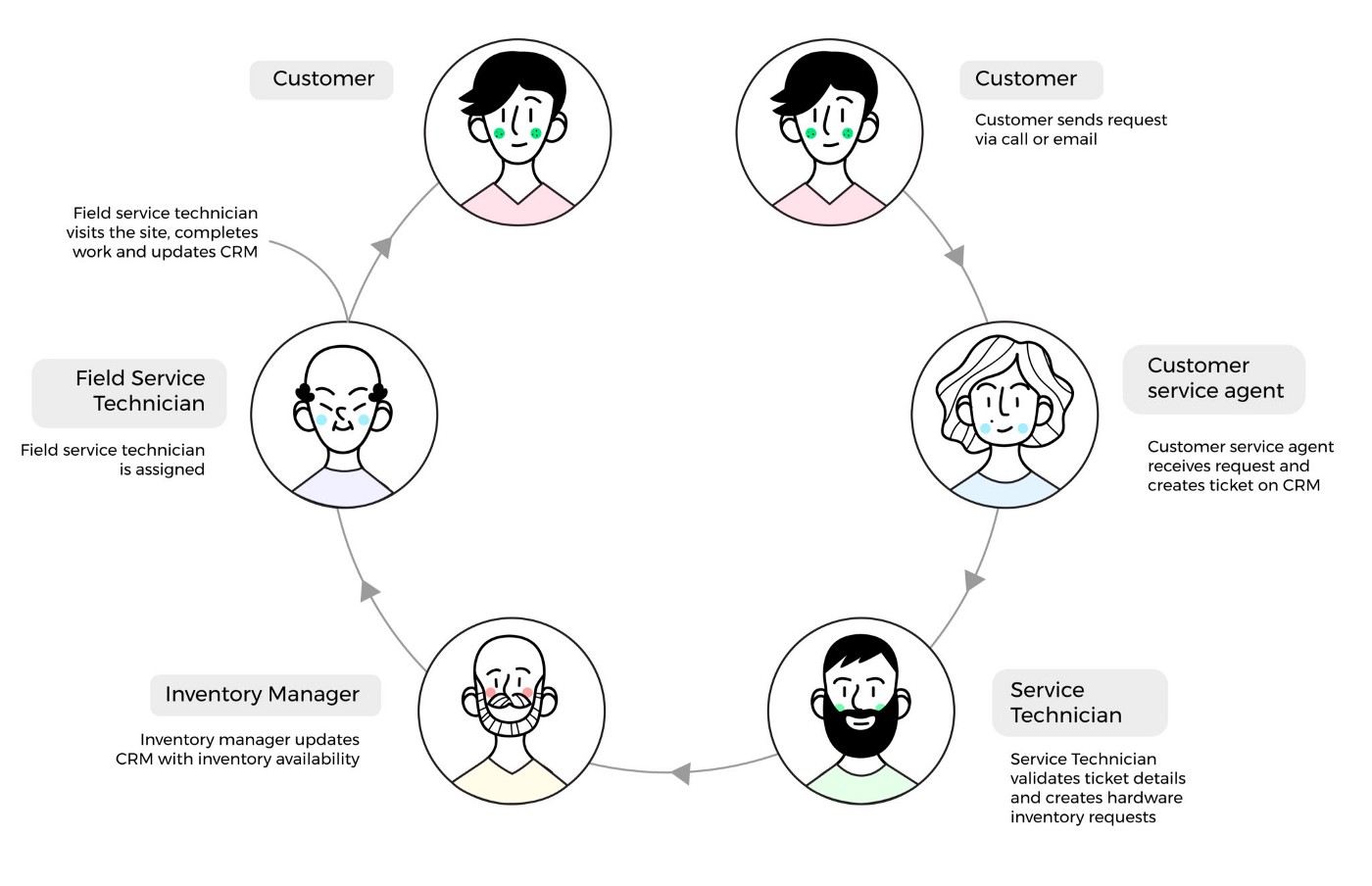Visuals and narratives are crucial components of the journey mapping exercise. They’re highly effective communicators and relay information in a manner that is interesting, relatable, and concise. This resonates, especially in organizations that assign departmental/team KPIs while ignoring the need to measure the entire experience from the user’s point of view. Demonstrating the holistic user experience is the key purpose behind showcasing journey maps. This feature comes in handy to ensure that you gain the stakeholders’ attention and kicks start conversations centered on improving user experience.
Key Components of Journey Maps

User journeys in the B2C context represent the purchase process, which can be fairly linear. The B2B user journey, on the other hand, is typically used to depict a business outcome — this could be a patient booking an appointment with a doctor or an insurance agent processing a claim. Therefore, enterprise journey maps tend to be more process-oriented rather than being persona-oriented. They cover the path of the work being accomplished from beginning to its culmination, featuring roles and/or departments.
Enterprise applications perform the task of supporting complex, mission-critical functions of a business, like loan approvals in banks or warehouse logistics. This means that its users have to perform tasks within the system-dictated parameters. Therefore, it is imperative that enterprise systems be designed to support and empower the users and workflows in every possible capacity. A crucial tool to develop such a system is journey mapping.
Let’s consider a typical process map for hardware replacement in a surveillance services company –

How Journey Maps Help:

Drive the organization’s outlook from inside-out to outside-in

Every company is a cohesive unit that functions on departmental coordination and cooperation. Journey mapping is a tool that helps track user journeys from start to end, emphasizing the thoughts, actions, and emotions of those involved. By eliminating areas of friction, it lends a unique and sustainable competitive edge that can set the organization in a league of its own.
Create a common vision that is followed across the company

If the company allows chaotic, siloed internal processes and systems to drive decisions that affect customer experience, it ends up being detrimental, eventually impacting the bottom line. Journey maps collate the work process in its entirety based on cross-department interactions and collaboration. Therefore, a journey map is a primary initiative taken towards investing in customer satisfaction on an organizational level.
Enable departments to own responsibility for key touchpoints

It is usually observed that areas of friction and inconsistencies arise because no department or team is “officially” responsible for owning that element. Journey maps, in such cases, help ensure that departments and teams align with different touchpoints in the journey that need addressing. Journey maps help departments gain a bird’s eye view of the process in totality and thereby better understand the role they’re playing within it and improve it end-to-end.
Target specific areas of improvement

Journey maps help zoom in on specific work processes, be it understanding differences or similarities across other journeys of multiple personas or prioritizing high-value, critical, or weakest work processes.
Help make sense of problem areas in work processes

When analytics or other quantitative data reveal specific stagnations or slowdowns — for instance, customer complaints taking longer than usual to resolve or an application being underutilized, journey mapping can help identify the causes. This helps focus efforts on meaningful corrections rather than commissioning a complete rehash of the entire process.
We’re living in an age where products and services have melded into integrated experiences. Mapping the user journey (pain points and high points) is the first step towards creating such delightful and immersive integrated experiences instead of replicating technical specifications from existing products. Since user journey mapping is based on firsthand observations and understanding the underlying needs of potential users in their own environments, this method gains a deserving spot while designing complex enterprise products.








